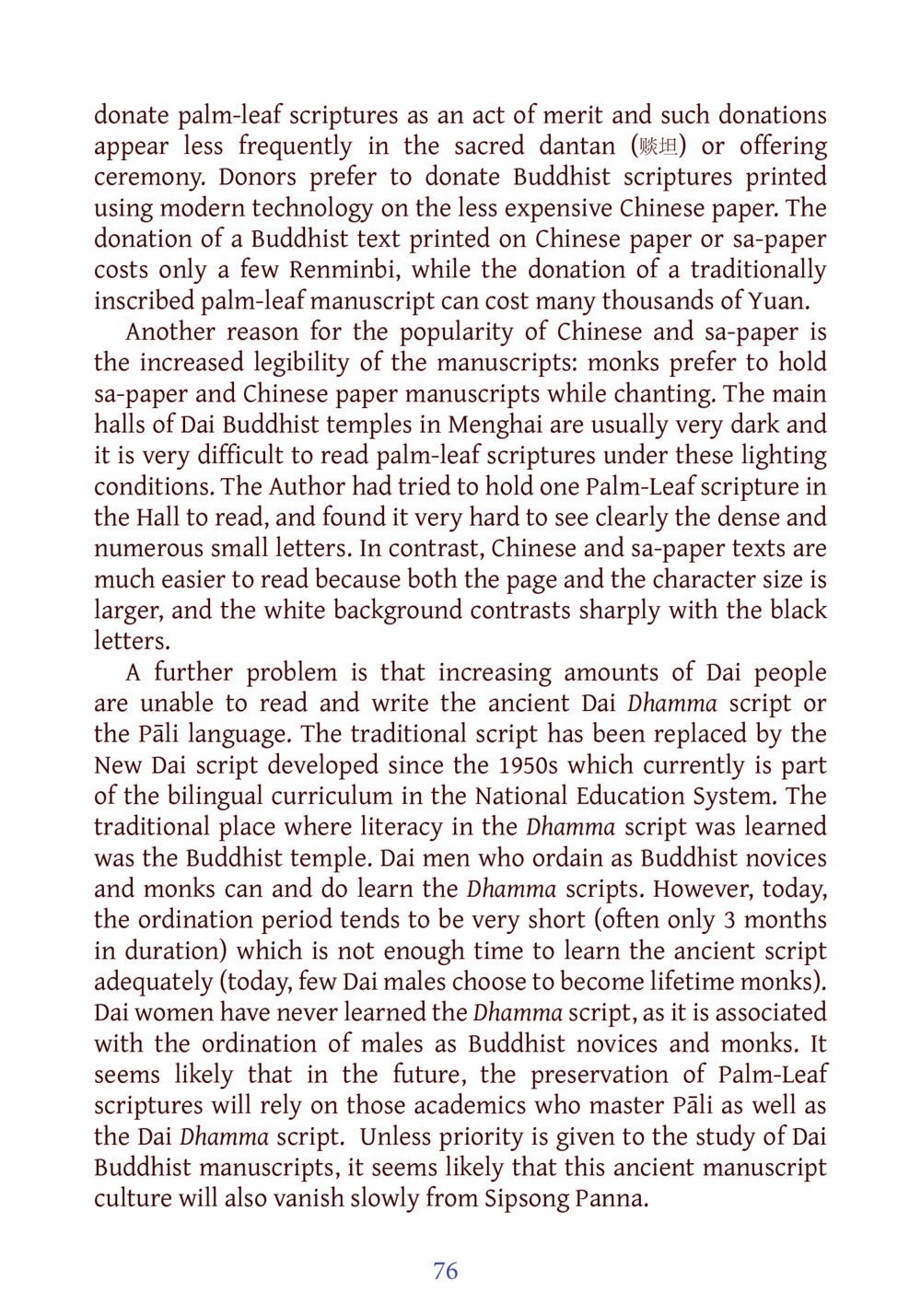Preservation of Palm-Leaf Scriptures in Dai Buddhism : หน้า 97/141
DIRI Journal : หน้า 97/141 Explores the challenges of preserving palm-leaf scriptures in Dai Buddhism, including the transition to modern paper and literacy issues.
0 ครั้ง

สรุปเนื้อหา
This text discusses the decline in donations of traditional palm-leaf scriptures in favor of more accessible and readable texts printed on Chinese and sa-paper. Reasons include cost, legibility, and the diminishing ability of the Dai people to read traditional scripts, as modern education focuses on the New Dai script. The manuscript culture faces risks of vanishing in Sipsong Panna due to these educational shifts and the brief ordination periods that limit script learning. The future preservation of these texts may depend on academic interest in Pāli and Dai Dhamma script, as traditional learning sites like temples see reduced participation, especially among women. For more details, visit dmc.tv.
หัวข้อประเด็น
-Donation Practices in Buddhism
-Transition to Modern Texts
-Legibility Issues in Sacred Texts
-Language and Literacy Challenges
-Preservation of Cultural Heritage
ข้อความต้นฉบับในหน้า
หน้าหนังสือทั้งหมด













































































































































